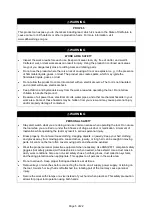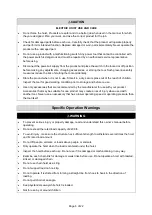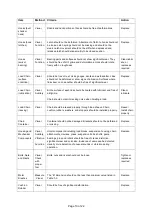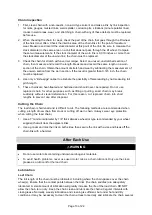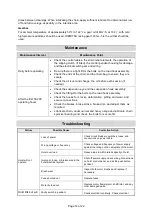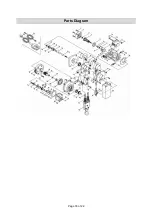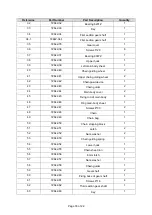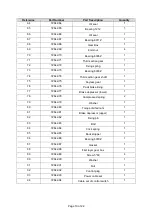
Page 13 of 22
Chain Inspection
1. First, clean chain with a non-caustic , non-acid type solvent and make a link by link inspection
for nicks, gouges, twisted links, weld splatter, corrosion pits, striations (minute parallel lines),
cracks in weld areas, wear, and stretching. A chain with any of these defects must be replaced
before use.
2. When checking the chain for wear, check the part of the chain that goes through the lift wheel
of the hoist most often. Check the interlink area of the chain links for the point of maximum
wear. Measure and record the stock diameter at this point of the link. Be sure to measure the
stock diameter in the same area on a link that does not pass through the lift wheel. Compare
these two measurements. If the stock diameter of the worn link is 0.010 inches or more than
the stock diameter of the unworn link, the chain must be replaced.
3. Check the chain for stretch with a vernier caliper. Select an unused, unstretched section of
chain, then measure and record the length. Measure and record the same length on a worn
section of the chain. Obtain the amount of stretch and wear by subtracting the measurement of
the unworn section from the worn section. If the result is greater than 0.145 inch, the chain
must be replaced.
4. Use only
a “knife-edge” caliper to eliminate the possibility of false reading by not measuring full
pitch length.
5. These chains are heat-treated and hardened and should never be repaired. Do not use
replaced chain for other purposes such as lifting or pulling. Load chain may break
suddenly without visual deformation. For this reason, cut replaced chain into short
lengths to prevent use after disposal.
Cutting the Chain
The
load chain is hardened and is difficult to cut. The following methods are recommended when
cutting a length of new chain from stock or cutting off worn chain. (Always wear eye protection
when cutting the load chain.)
1. Use a 7
” minimum diameter by 1/8” thick abrasive wheel (or type recommended by your wheel
supplier) that will clear the adjacent links.
2. Use a grinder and nick the link on both sides, then secure the link with a vise and break off the
chain link with a hammer.
After Each Use
⚠
WARNING
•
Do not use motor oils containing unknown carcinogenic materials.
•
To avoid health problems, never use used motor oils as a chain lubricant. Only use the clean
grease as a lubricant for the load chain.
Lubrication
Loaf Chain
The full length of the chain must be lubricated, including where the chain passes over the chain
wheel(s). Ensure that the contact points between the links (the chain saddles) are adequately
lubricated. A small amount of lubrication will greatly increase the life of the load chain. DO NOT
allow the chain to run dry. Keep the chain clean and lubricate the chain at regular intervals with
clean grease. Normally, weekly lubrication and cleaning is sufficient, but under hot and dirty
conditions, it may be necessary to clean the chain at least once daily and lubricate the chain several
Summary of Contents for 72642
Page 16: ...Page 16 of 22 Parts Diagram ...





